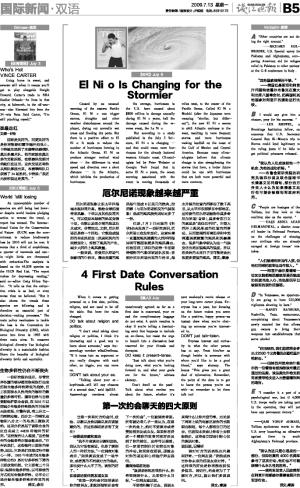Caused by an unusual warming of the eastern Pacific Ocean, El Ni o can trigger storms, droughts and other weather disturbances around the planet, drying out normally wet areas and flooding dry parts. But there is a positive effect to El Ni o: It tends to reduce the number of hurricanes forming in the Atlantic Ocean. El Ni os produce stronger vertical wind shear — the difference in wind speed and direction over a short distance — in the Atlantic, which inhibits the production of hurricanes.
On average, hurricanes in the U.S. have caused about $800 million in damage annually during El Ni o years, half the damage caused during the reverse event, the La Ni o.
But according to a study published in the July 3 Science, El Ni o is changing — and that could mean more hurricanes for the already battered western Atlantic coast. Climatologists led by Peter Webster at Georgia Tech found that in some El Ni o years, the ocean warming associated with the event is moving thousands of miles west, to the center of the Pacific Ocean. Called El Ni o Modoki (after the Japanese term meaning "similar, but different"), the new El Ni o seems to shift Atlantic cyclones to the west, resulting in more frequent storms and more hurricanes making landfall on the coast of the Gulf of Mexico and Central America. Because many climatologists believe that climate change is also strengthening the storms that form, a hotter future could be one with hurricanes that are both more powerful and more common.

